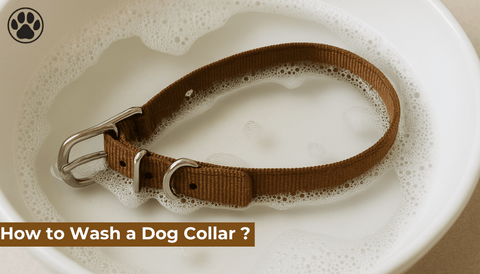
How Long Can a Dog Go Without Water ?
of reading - words
Water is essential for all living creatures, including dogs. It plays a vital role in maintaining their health, energy levels, and bodily functions. As a responsible pet owner, you may wonder, "How long can my dog go without water?" Understanding this is crucial for preventing dehydration and ensuring your furry friend stays healthy. In this article, we'll explore how long dogs can survive without water, the risks associated with dehydration, and how to keep your dog adequately hydrated.
Why Is Water Important for Dogs?
Water makes up approximately 60-70% of a dog's body weight and is essential for numerous physiological processes. It aids in digestion, nutrient absorption, circulation, and temperature regulation. Without sufficient water, a dog’s body cannot function properly, leading to dehydration and potentially severe health issues.
Dogs lose water daily through urination, panting, drooling, and even their skin. If they don’t replenish this lost water, their body will begin to shut down vital functions. This is why consistent access to clean drinking water is crucial for your dog’s well-being.
How Long Can a Dog Survive Without Water?
On average, a healthy dog can survive without water for about 72 hours (three days). However, this duration depends on several factors, including the dog's age, size, health condition, and environmental temperature. While some dogs may endure a bit longer under specific circumstances, going even a day without water can cause noticeable symptoms of dehydration.
For puppies, senior dogs, or dogs with existing health issues, the tolerance for water deprivation is much lower. Similarly, exposure to high temperatures or vigorous activity can significantly shorten the time a dog can go without water.
Signs of Dehydration in Dogs
Recognizing the signs of dehydration early is critical for your dog’s health. Common symptoms include:
- Excessive Panting: A dehydrated dog will often pant excessively to cool down.
- Dry Nose and Gums: A dog suffering from dehydration will have a dry, sticky nose and gums instead of the usual moist texture.
- Loss of Skin Elasticity: Pinch your dog’s skin gently. If it doesn’t spring back quickly, your dog may be dehydrated.
- Lethargy: Dehydrated dogs often lack energy and may appear unusually tired or unwilling to move.
- Sunken Eyes: Severe dehydration can cause the eyes to appear sunken into the sockets.
- Loss of Appetite: A dehydrated dog might refuse to eat or drink, worsening the condition.
If you notice these symptoms, it’s crucial to act quickly. Severe dehydration can lead to kidney failure, shock, or even death.
What to Do If Your Dog Is Dehydrated
If your dog shows signs of dehydration, take immediate action to help rehydrate them:
- Offer Small Amounts of Water: Let your dog drink small amounts of clean water frequently. Avoid letting them gulp large quantities at once, as this can cause vomiting.
- Provide Electrolytes: Canine electrolyte solutions can help replenish lost minerals and rehydrate your dog faster.
- Visit a Veterinarian: If symptoms persist or worsen, consult a veterinarian immediately. Severe cases may require intravenous fluids to restore hydration levels.
Preventing Dehydration in Dogs
Prevention is always better than treatment. Here are some practical steps to ensure your dog stays hydrated:
- Provide Fresh Water Daily: Always keep a clean, fresh water bowl accessible to your dog.
- Monitor Water Intake: Keep track of how much water your dog is drinking, especially during hot weather or after exercise.
- Offer Ice Cubes: Some dogs enjoy chewing on ice cubes, which can be a fun way to keep them hydrated.
- Bring Water During Walks: Carry a portable water bottle and a collapsible bowl when taking your dog for walks or trips.
- Use Wet Food: Adding wet food or water to dry kibble can increase your dog’s water intake.
- Create a Cool Environment: Keep your dog cool during hot days to reduce excessive panting and water loss.
Factors That Affect a Dog’s Water Needs
Several factors influence how much water your dog needs daily:
- Size and Weight: Larger dogs require more water than smaller breeds.
- Activity Level: Active dogs or those undergoing strenuous exercise need extra hydration.
- Diet: Dogs on a dry kibble diet may require more water than those eating wet food.
- Weather Conditions: Hot and humid weather increases water loss, necessitating higher water intake.
As a general rule, dogs need about 1 ounce of water per pound of body weight daily. However, individual needs may vary.
How to Encourage Your Dog to Drink More Water
Some dogs may not naturally drink enough water, especially if they’re picky or unwell. Here are a few tips to encourage better hydration:
- Flavor the Water: Add a splash of low-sodium chicken broth to make water more appealing.
- Use a Fountain: Some dogs are more attracted to running water than a stagnant bowl.
- Place Multiple Water Bowls: Keep water bowls in different areas of your home to make access convenient.
- Keep the Bowl Clean: Regularly wash the water bowl to remove dirt, debris, and bacteria.
When to See a Veterinarian
If your dog refuses to drink water for more than 24 hours, it’s essential to consult a veterinarian. Persistent dehydration may indicate an underlying health issue such as kidney disease, diabetes, or a gastrointestinal problem. Early intervention can make a significant difference in your dog’s recovery.
FAQ: How Long Can a Dog Go Without Water?
Q: How much water should my dog drink daily?
A: Dogs typically need about 1 ounce of water per pound of body weight daily. However, this can vary based on size, activity level, and environmental factors.
Q: Can my dog survive without water for 24 hours?
A: While most dogs can survive without water for 24 hours, it’s not recommended. Even a short period without water can lead to dehydration, especially in hot weather or active dogs.
Q: What happens if my dog doesn’t drink water?
A: A lack of water can lead to dehydration, causing symptoms like lethargy, dry gums, and loss of appetite. Severe dehydration can result in kidney failure, organ damage, or death.
Q: How can I tell if my dog is dehydrated?
A: Check for symptoms like excessive panting, dry nose, loss of skin elasticity, and lethargy. If you notice these signs, take action immediately.
Q: Can dogs drink too much water?
A: Yes, excessive water intake can lead to water intoxication, which is rare but serious. Signs include vomiting, bloating, and lethargy. Consult a veterinarian if you’re concerned.




